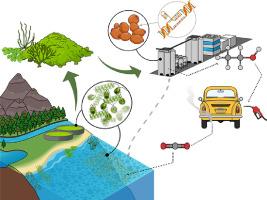Challenges and opportunities for third-generation ethanol production: A critical review
Abstract
In recent decades, third-generation (3G) biofuels have become a more attractive method of fuel production, as algae cultivation does not infringe on resources needed for food production. Additionally, algae can adapt to different environments, has high photosynthetic efficiency (CO2 fixation), and has a high potential for carbohydrate accumulation. The prevalence of algae worldwide demonstrates its ability to adapt to different environments and climates, proving its biodiversity and versatility. Algae can be grown in wastewater, seawater, and even sewage, thus ensuring a lower water footprint and greater energy efficiency during algal biomass production. Because of this, the optimization of 3G ethanol production appears to be an excellent alternative to mitigate environmental impacts and increase energy and food security. This critical review presents (i) the stages of cultivation and processing of micro and macroalgae; (ii) the selection of yeasts (through engineering and/or bioprospecting) to produce ethanol from these biomasses; (iii) the potential of seawater-based facilities to reduce water footprint; and (iv) the mass and energy balances of 3G ethanol production in the world energy matrix. This article is, above all, a brainstorm on the environmental viability of algae bioethanol.


 求助内容:
求助内容: 应助结果提醒方式:
应助结果提醒方式:


